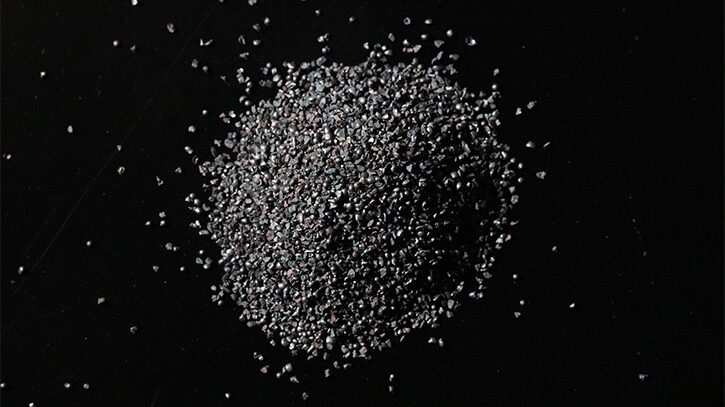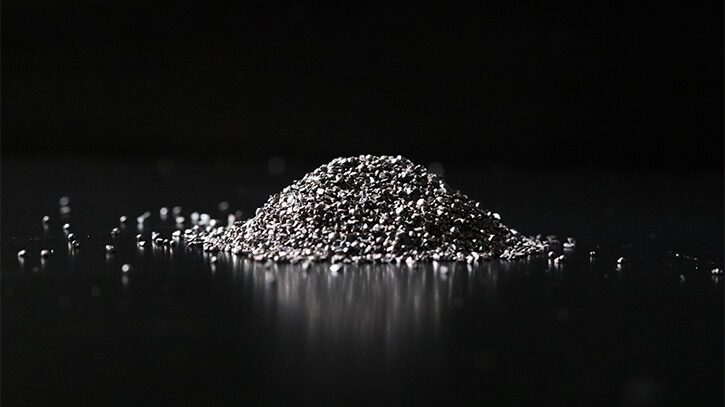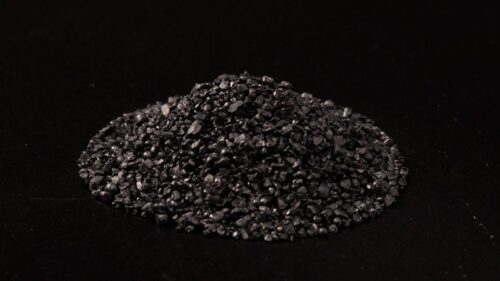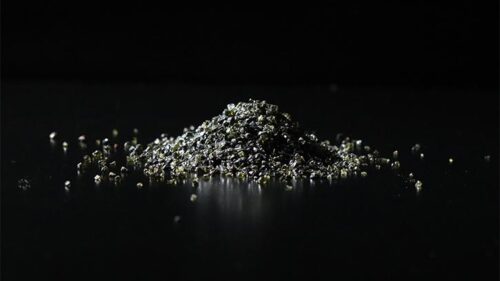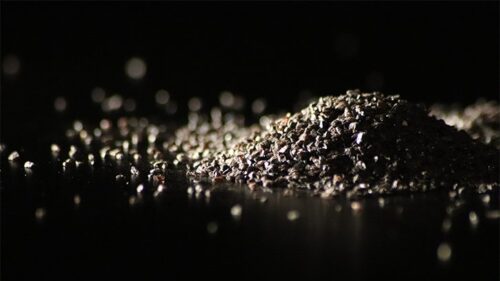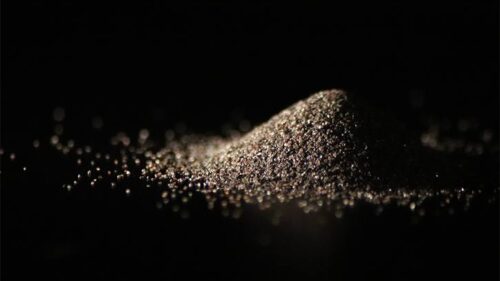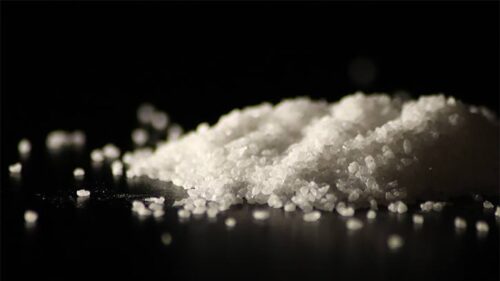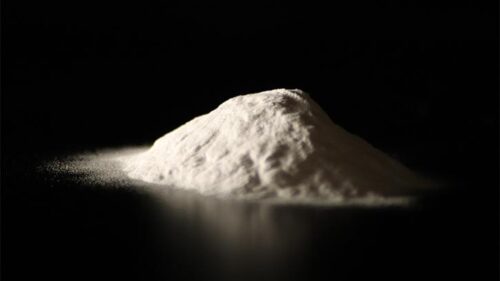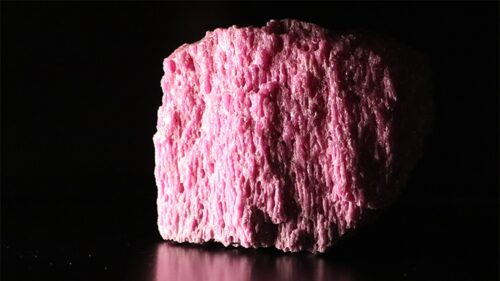Like steel shot, steel grit is a very common metallic blasting abrasive. Grit is different from steel shot in that it is randomly shaped and angular. Steel grit, given its sharp shape, will etch or erode surfaces.
It comes in a variety of shapes and levels of hardness. It has a high bulk density like steel shot and can have wear-and-tear effects on equipment if it is not properly outfitted to handle the media.
Steel grit is sized via a screening process. A size of steel grit will contain a variety of particles within a set range for that given size. The larger the size number, the smaller the steel grit particle.
As with any steel media, ferrous contamination against the surface being blasted will occur. Because of its durability and low-attrition rate, steel grit is a popular choice in wheel blast equipment and properly outfitted blast rooms.
Steel Grit Abrasive Applications:
- Producing uniform, matte finish with a sharp, coarse texture
- Blast cleaning and profiling of steel and other hard surfaces
Steel Grit Characteristics:
- Angular, random shapes
- Bulk Density – approx. 300 lbs. per cubic foot
- Hardness Ranges:
- GS (40-51 HRC)
- GM (47-56 HRC)
- GL (54-61 HRC)
- GH (> 60 HRC)
- Grit Size Range: G16 – G120


